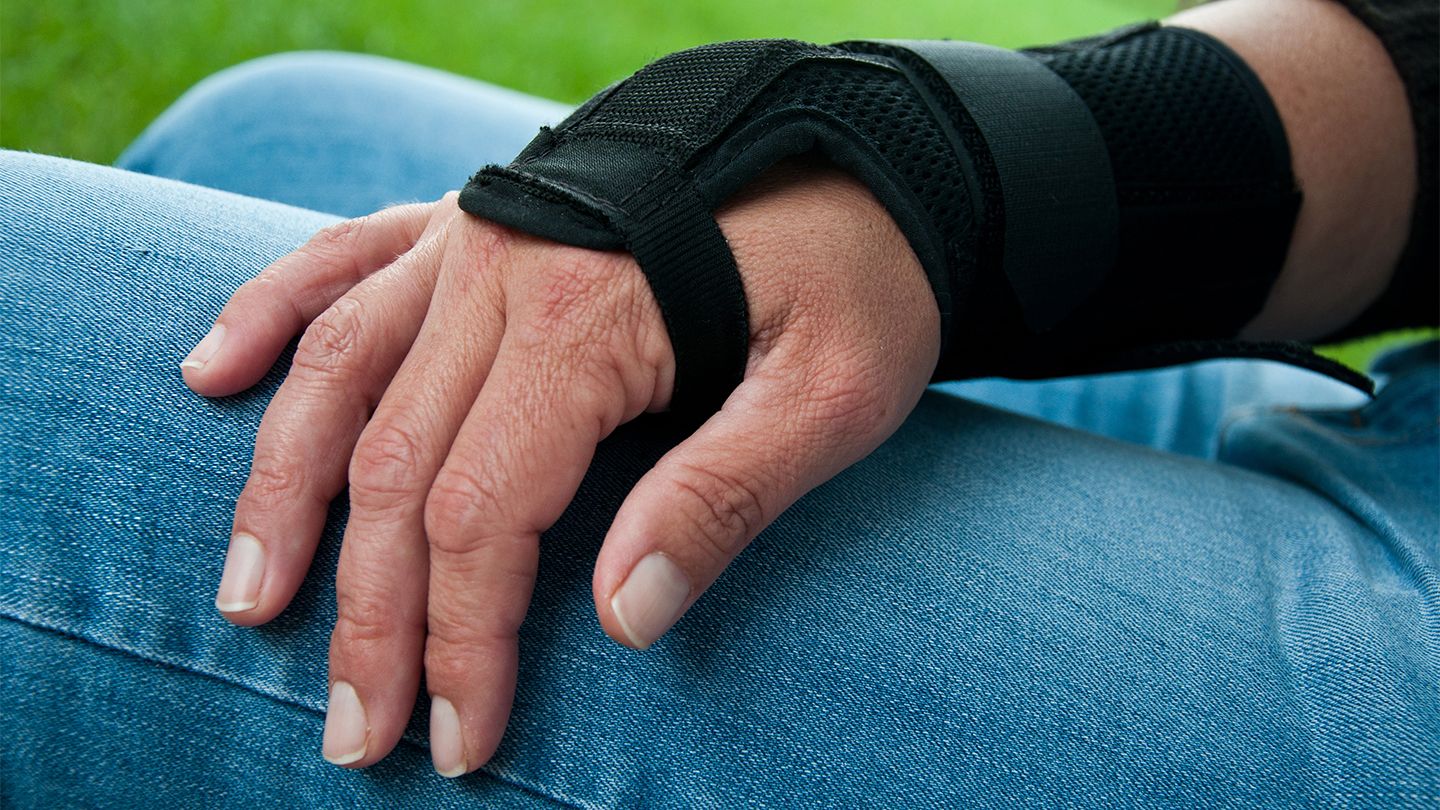
Joint discomfort in the wrists can significantly impact daily activities, leading to pain, limited mobility, and decreased productivity. Wrist braces are an effective non-invasive solution for providing support, stability, and relief from such discomfort.
These devices are designed to immobilize the wrist, reduce joint strain, and promote healing. This article will explore the benefits and applications of wrist braces, discussing their mechanisms of action, the different types available, and their role in managing various wrist conditions.
Whether you are an athlete, an office worker, or anyone suffering from wrist pain, wrist braces offer a viable option for finding much-needed relief.
Understanding Wrist Discomfort And Its Causes

Wrist discomfort can arise from various factors, including repetitive strain injuries, carpal tunnel syndrome, arthritis, sprains, and fractures. These conditions often lead to pain, swelling, weakness, and reduced range of motion.
The wrists are complex joints composed of multiple bones, ligaments, tendons, and nerves, making them susceptible to injury and stress. Addressing wrist discomfort requires proper support, protection, and immobilization of the joint, and wrist braces provide the necessary wrist support for aiding in the healing process and restoring normal function.
How Wrist Braces Work
Orthopedic devices called wrist braces are used to support and immobilize the wrist joint. Typically, they are constructed from breathable, light materials like neoprene or elastic textiles.
There are numerous forms of wrist braces, including wrap-around varieties, splints, and stiff braces. The basic goals of these braces are to reduce strain on the damaged area, stabilize the joint, and restrict motion.
By restricting motion, wrist braces help alleviate pain and inflammation, allowing damaged tissues to heal. Additionally, the compression provided by the braces helps control swelling and increases blood circulation, promoting faster recovery.
Wrist braces also provide proprioceptive feedback, giving the wearer a sense of joint position and movement, which can improve stability and prevent further injury.
Types Of Wrist Braces

- Functional Braces – These braces are designed to limit wrist movement while maintaining practical use of the hand. They are commonly used for sprains, strains, and mild instability.
- Immobilizing Braces – These braces restrict wrist movement entirely and are used in cases of severe sprains, fractures, or post-surgical recovery.
- Carpal Tunnel Braces – Specifically designed to relieve symptoms of carpal tunnel syndrome, these braces support the wrist in a neutral position, reducing pressure on the median nerve and alleviating pain and numbness.
- Sports Braces – These braces are tailored for athletes and provide additional support during physical activities. They are often lightweight, breathable, and flexible, allowing for a range of motion while offering stability.
Conditions Managed By Wrist Braces
Wrist braces are versatile devices that can help manage various wrist conditions. Some common conditions where wrist braces are beneficial include:
- Carpal Tunnel Syndrome – Wrist braces can alleviate symptoms by keeping the wrist neutral and reducing pressure on the median nerve.
- Tendinitis – By limiting wrist movement, braces help reduce strain on the tendons, relieving inflammation and pain.
- Sprains and Strains – Wrist braces provide stability and support to injured ligaments and muscles, aiding in the healing process.
- Arthritis – Wrist braces can help reduce pain and improve joint function by providing compression, warmth, and support.
- Rheumatoid Arthritis – Wrist braces can assist individuals with rheumatoid arthritis by reducing inflammation, supporting weakened joints, and relieving pain.
- Ganglion Cysts – Wrist braces can help immobilize the wrist and prevent excessive movement, reducing discomfort and promoting the healing of ganglion cysts.
- Repetitive Strain Injuries (RSIs) – RSIs, such as De Quervain’s tenosynovitis or tennis elbow, can be managed with wrist braces that provide compression and support to the affected tendons, allowing for pain relief and recovery.
- Post-Surgical Recovery – After wrist surgery, immobilizing or functional wrist braces are often prescribed to protect the surgical site, reduce strain on the healing tissues, and promote proper healing.
Benefits Of Wrist Braces

Wrist braces offer numerous benefits for individuals experiencing wrist discomfort:
- Pain Relief – By limiting movement and providing support, wrist braces can help reduce pain associated with various wrist conditions.
- Stability and Protection – Wrist braces stabilize the joint, protecting it from further injury and preventing excessive strain during activities.
- Swelling and Inflammation Control – The compression offered by wrist braces helps control swelling, promote blood circulation, and reduce inflammation, aiding in the healing process.
- Improved Function and Mobility – Wrist braces can enhance wrist function and range of motion by providing support and reducing pain, allowing individuals to perform daily activities more comfortably.
- Versatility – Wrist braces are suitable for a wide range of individuals, including athletes, office workers, and those with chronic wrist conditions, making them a versatile solution for various lifestyles and needs.
- Non-Invasive Approach – Wrist braces provide a non-surgical and non-invasive option for managing wrist discomfort, avoiding the potential risks and complications associated with invasive procedures.
Choosing And Using Wrist Braces
When selecting a wrist brace, it is essential to consider the specific condition, level of support needed, comfort, and fit. Consulting with a healthcare professional or orthopedic specialist can help determine the most suitable type of wrist brace for individual needs. Here are some guidelines for choosing and using wrist braces:
- Size and Fit – Wrist braces should fit snugly but not be too tight. Measure the circumference of the wrist and refer to the manufacturer’s sizing chart to find the appropriate size.
- Adjustability – Look for braces with adjustable straps or closures to allow for a customized fit and comfortable compression.
- Comfort and Breathability – Opt for braces made from breathable materials to prevent excessive sweating and discomfort during prolonged use.
- Proper Application – Follow the instructions provided by the manufacturer or healthcare professional for the correct positioning and application of the wrist brace.
- Duration of Use – Wear the wrist brace as recommended by the healthcare professional. It may be necessary to wear the brace during activities that aggravate the wrist and at night for certain conditions.
- Maintenance – Clean the wrist brace regularly according to the manufacturer’s instructions to maintain hygiene and prolong its lifespan.
Consult A Healthcare Professional

While wrist braces can provide significant relief for many individuals, it is crucial to consult a healthcare professional for an accurate diagnosis and personalized treatment plan. A healthcare professional can assess the severity of the condition, recommend the most appropriate type of wrist brace, and provide guidance on its usage. They can also suggest complementary therapies such as physical therapy or recommend additional treatments if necessary.
Conclusion
Wrist braces are valuable tools for managing joint discomfort and promoting healing. These devices alleviate pain, reduce inflammation, and improve overall wrist function by providing support and stability and restricting excessive movement.
Whether used for acute injuries, chronic conditions, or preventive measures during physical activities, wrist braces offer a practical and non-invasive solution. It is essential to consult with a healthcare professional to determine the most appropriate type of wrist brace for your specific condition. With the help of wrist braces, individuals can regain comfort, and mobility and enjoy a more productive and active lifestyle.








